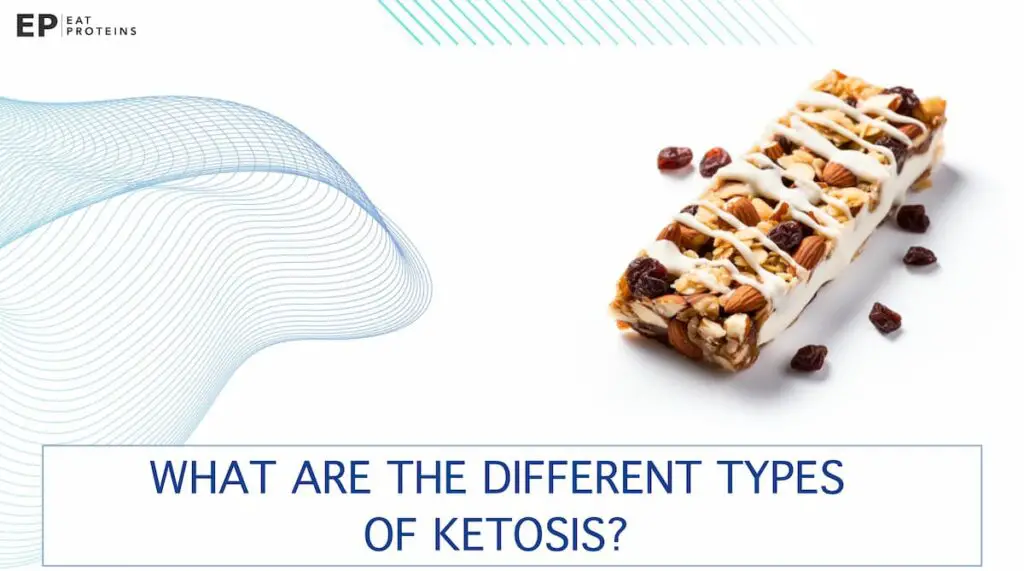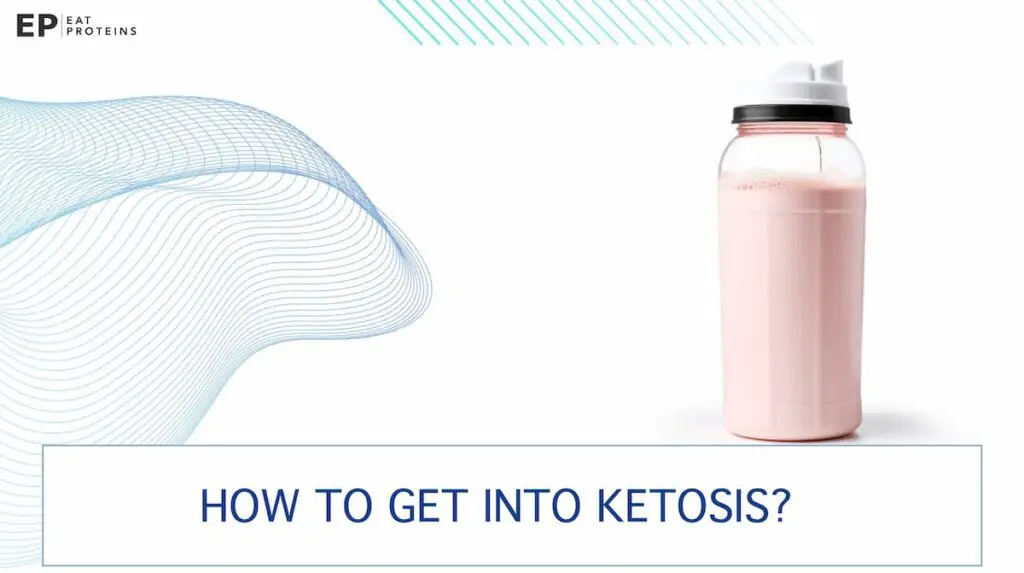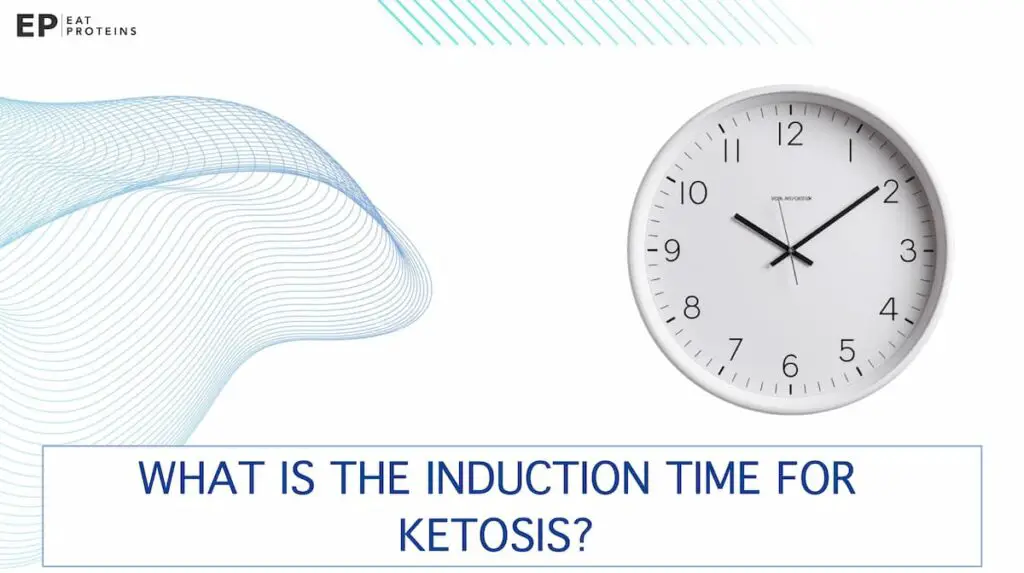Ketosis is a metabolic state where the body produces ketone bodies as an alternative fuel source due to a lack of carbohydrates. It works by breaking down fatty acids into ketone bodies, which are then used by the body for energy.
The main benefit of ketosis is weight loss and improved metabolic health. However, a potential side effect of ketosis is ketoacidosis, a dangerous condition characterized by excessively high levels of ketones in the blood.
What is Ketosis?
Ketosis, as defined by Victoria M. Gershuni, MD, MSGM, from the University of Pennsylvania, is a metabolic state where the body shifts from using glucose to ketone bodies as its primary energy source, typically occurring when carbohydrate intake is reduced to fewer than 50 grams per day. In this state, ketone bodies serve as alternative fuel for nearly every cell in the body.
Blood ketone levels in nutritional ketosis usually range from 0.5 – 3.0 millimoles per liter (mmol/L). As indicated by a 2017 study by Jonathan M. Scott and Patricia A. Deuster, although ketogenic diets have shown positive effects on weight loss and glucose tolerance, long-term effects on lipid profiles and other health markers are not fully understood and can vary between individuals.
What is the main purpose of Ketosis in the body?
The main purpose of ketosis in the body is to provide an alternative fuel source when glucose levels are low. During ketosis, the liver produces ketones, such as acetoacetate, beta-hydroxybutyrate, and acetone, which can supply up to 60% of the body’s ATP needs. This shift in metabolism allows the body to break down excess fat stores for energy, aiding in weight management.
The secondary purpose of ketosis in the body is to improve metabolic and inflammatory markers, as well as address the biomarkers of metabolic syndrome. Ketosis can lead to improved insulin sensitivity, reduction in blood triglyceride levels, increased HDL cholesterol, and a shift in LDL particle size and volume. This can help in the reversal of metabolic syndrome and reduce the risk of cardiovascular disease.
What is the mechanism behind Ketosis?
The mechanism behind ketosis involves the utilization of ketones as an alternative fuel source when glucose and glycogen stores are minimized. Ketones are water-soluble molecules produced in the liver when carbohydrate intake is restricted, resulting in low insulin levels. This leads to the breakdown of stored fat, known as lipolysis, which produces free fatty acids. These free fatty acids are then converted into ketone bodies through a process called ketogenesis.
When asking about when your body enters ketosis, a 2016 study by Victoria M. Gershuni from the University of Pennsylvania provides some insights. The study states that blood ketone levels during ketosis typically range from 500 to 3000 µmol/L (micromoles per liter). In this metabolic state, the body shifts from relying on glucose for energy to utilizing fatty acids and ketones, which can supply up to sixty percent of the body’s ATP needs.
What are the different types of Ketosis?
The different types of ketosis include nutritional ketosis, therapeutic ketosis, and pathological ketosis.

- Nutritional ketosis occurs through diet, often by consuming fewer than fifty grams of carbohydrates per day.
- Therapeutic ketosis is medically supervised and is used to treat specific conditions like epilepsy.
- Pathological ketosis, such as diabetic ketoacidosis, is a dangerous condition that occurs in uncontrolled diabetes and requires immediate medical attention.
Which type of Ketosis are you in when on a low-carb diet?
When following a low-carb diet, you are typically in a state of nutritional ketosis, which is achieved by reducing your carbohydrate intake to 5-10% of total calories, resulting in increased production of ketones in the liver.
What are the benefits of Ketosis?
The benefits of ketosis, which are listed below, include weight loss, increased energy levels, improved mental focus, and better blood sugar control.
- Weight loss: Ketosis promotes fat burning and can lead to significant weight loss.
- Increased energy levels: Ketone bodies serve as a highly efficient fuel source, providing sustained energy throughout the day.
- Improved mental focus: Ketosis has been associated with enhanced cognitive function and mental clarity.
- Better blood sugar control: Ketosis can improve insulin sensitivity and help regulate blood sugar levels.
- Reduced inflammation: Ketosis has been shown to decrease inflammation in the body, which is linked to various health conditions.
- Appetite suppression: Ketone bodies can decrease appetite and reduce cravings, aiding in weight management.
- Improved cholesterol profile: Ketogenic diets have been found to increase HDL cholesterol levels and decrease triglycerides.
- Enhanced athletic performance: Ketosis can enhance endurance and performance in athletes by utilizing fat as a fuel source.
- Neuroprotective effects: Ketones have neuroprotective properties and may benefit neurological conditions such as epilepsy and Alzheimer’s disease.
- Better heart health: Ketogenic diets have been shown to improve various markers of cardiovascular health, including blood pressure and lipid profiles.
What are the common side effects of Ketosis?
The following is the list of common side effects of ketosis.
- Bad breath (caused by the presence of acetone in the breath)
- Fatigue and weakness
- Constipation and digestive issues
- Keto flu symptoms (headache, nausea, dizziness, irritability) during the initial transition period
- Insomnia and sleep disturbances
- Electrolyte imbalances (particularly sodium, potassium, and magnesium)
- Increased urination and dehydration
- Changes in menstrual cycle and hormonal imbalances in women
- Difficulty in maintaining long-term adherence to the ketogenic diet.
This video from Dr. Dominic D’Agostino explains the common side effects of ketosis and how to avoid them.
What are the uncommon side effects associated with Ketosis?
Uncommon side effects associated with ketosis include temporary hair loss or thinning, elevated levels of uric acid, which could lead to gout, or nutrient deficiencies due to the restrictive nature of the diet.
How to get into Ketosis?
To enter ketosis, adhere to the steps outlined below.

- Reduce carbohydrate intake: To initiate ketosis, it is essential to limit carbohydrate consumption. Start by significantly reducing your intake of foods high in carbohydrates such as grains, sugars, and starches.
- Increase healthy fat intake: Replace the calories from carbohydrates with healthy fats. Include foods like avocados, nuts, seeds, olive oil, coconut oil, and fatty fish in your diet to provide your body with the necessary fats for ketone production.
- Maintain moderate protein intake: While protein is an important macronutrient, excessive protein intake can hinder ketosis. Ensure that your protein intake is moderate and balanced.
- Engage in regular physical activity: Regular exercise can help deplete glycogen stores in the body, allowing for a faster transition into ketosis. Aim for a combination of cardiovascular exercise and strength training.
- Stay hydrated: Adequate hydration is crucial during the ketosis process. Drink plenty of water throughout the day to support overall health and facilitate ketone production.
- Monitor your ketone levels: Use ketone testing strips or a blood ketone meter to monitor your ketone levels. This will help you determine if you have successfully achieved ketosis.
- Be patient and consistent: It may take a few days to a week for your body to enter ketosis. Be patient and consistent with your low-carb, high-fat diet, and lifestyle changes.
How do you get into ketosis fast in 24 hours?
To rapidly enter a state of ketosis within 24 hours, you can initiate a fast, abstaining from all food and consuming only water. Another option is to follow a very low-carbohydrate, high-fat diet, limiting your carb intake to fewer than 20 grams for the day. Additionally, ketone supplements can be used to induce ketosis quickly, although the efficacy of these supplements is still a subject of ongoing research, as noted in a 2017 study published in the Journal of Special Operations Medicine.
What foods promote Ketosis?
Foods that promote ketosis, which are outlined below, are those that are low in carbohydrates and high in fats, such as meat, fish, eggs, avocados, nuts, and oils.
- Meat (beef, pork, lamb, poultry)
- Fish (salmon, tuna, mackerel)
- Eggs
- Avocados
- Nuts and seeds (almonds, walnuts, flaxseeds)
- Oils (coconut oil, olive oil)
- Dairy products (full-fat cheese, butter, cream)
- Non-starchy vegetables (leafy greens, broccoli, cauliflower)
- Berries (raspberries, blackberries)
- Sweeteners (stevia, erythritol)
What foods inhibit Ketosis?
Foods that are high in carbohydrates, such as grains, sugars, fruits, and starchy vegetables, can inhibit ketosis by raising blood glucose levels and stimulating insulin release.
- Grains
- Sugars
- Fruits
- Starchy vegetables
- Bread
- Pasta
- Rice
- Potatoes
- Corn
- Beans
- Legumes
- Sugary drinks
- Desserts
- Processed foods high in carbohydrates
What is the induction time for Ketosis?
The induction time for ketosis, or the time it takes for the body to enter a state of nutritional ketosis, can vary from person to person. However, on average, it takes approximately 2-7 days to achieve ketosis.

This time frame is based on the transition period during which the body adapts to using ketones as its primary fuel source instead of glucose.
Factors such as individual metabolism, carbohydrate intake, and level of physical activity can influence the speed at which ketosis is achieved. Regular monitoring of blood ketone levels can help determine when ketosis has been successfully induced.
How many days does it take to get into Ketosis?
The time it takes to enter ketosis can vary from person to person, but it generally takes around 2 to 7 days of consuming a low carbohydrate ketogenic diet (<20-50g/day) to reach a state of nutritional ketosis. However, factors such as individual metabolism, exercise, and overall dietary habits can influence the time it takes to achieve ketosis. It is recommended to monitor blood ketone levels to determine when one has entered ketosis.
How long is it safe to be in Ketosis?
The duration of time it is safe to be in ketosis can vary depending on individual factors and goals. Generally, staying in a state of nutritional ketosis for a few weeks to several months is considered safe. However, it is recommended to consult with a healthcare professional or registered dietitian to determine the appropriate duration for your specific needs.
How do you know if you’re in Ketosis?
To determine if you’re in ketosis, you can look for initial signs such as bad breath, increased mental clarity, and a decrease in hunger. For a more accurate assessment, you can use blood ketone meters to measure ketone levels, which usually range from 0.5 to 3 mmol/L when in ketosis. Urine strips and breath analyzers are also available, but they are generally less accurate than blood tests.
Is entering ketosis recommended for a balanced diet?
No, entering ketosis is not considered part of a traditional balanced diet, as it requires significant carbohydrate restriction that can exclude important nutrients. It is primarily recommended for specific medical conditions rather than for general health.
What methods are available for measuring Ketosis?
There are several methods available for measuring ketosis, including measuring the levels of ketone bodies in the blood, breath, and urine.

- Blood Ketone Measurement
- Breath Ketone Measurement
- Urine Ketone Measurement
- Continuous Glucose Monitoring (CGM) Systems
- Laboratory Analysis
The gold standard for measuring ketosis is the measurement of beta-hydroxybutyrate (BOHB) levels in the blood. However, there are also affordable consumer devices available for measuring ketone bodies in breath and urine, providing a convenient and non-invasive alternative.
How do you measure ketosis while following a ketogenic diet?
To measure ketosis while following a ketogenic diet, you can use blood ketone meters to check the concentration of β-hydroxybutyrate (BOHB), which is considered the most accurate method and can detect levels ranging from 0.5 to 3 mmol/L.
Another option is to use breath analyzers to measure breath acetone (BrAce), which can increase 1000-fold in certain pathological states. Urine test strips can also be used, especially for beginners to gauge the onset of ketosis, but they are generally considered less accurate than blood and breath tests.
What are the facts about Ketosis?
Ketosis is a metabolic state in which the body predominantly uses ketones for energy, commonly achieved through fasting, low-carbohydrate intake, or the use of certain supplements like exogenous ketones and MCT oil. It has medical applications, most notably in treating drug-resistant epilepsy in children, and is under research for potential use in type 2 diabetes, Alzheimer’s, and certain cancers. However, ketosis can be affected by various medications, including antipsychotics and corticosteroids, which can interfere with insulin levels or fat metabolism.
What is the impact of exercise on ketosis?
Exercise can both induce and deepen a state of ketosis by depleting glycogen stores and increasing fat oxidation, but the impact can vary based on the type and intensity of the exercise. For endurance athletes, being in ketosis may provide a sustained energy source during long periods of physical activity.
What hormonal changes occur during ketosis?
Ketosis induces hormonal changes including a reduction in insulin levels and an increase in glucagon, both of which facilitate the breakdown of fatty acids into ketones. These hormonal shifts are crucial for maintaining the metabolic state that allows the body to utilize fat as a primary energy source.
What biochemical pathways are involved in ketosis?
In ketosis, the liver metabolizes fatty acids through the beta-oxidation pathway to produce acetyl-CoA, which then enters the ketogenesis pathway to form ketone bodies. These biochemical pathways are activated when carbohydrate intake is low and insulin levels are reduced.
What do experts say about ketosis?
Experts generally agree that ketosis can be effective for weight loss and may have therapeutic benefits, including for epilepsy and type 2 diabetes.
What are popular beliefs or myths about ketosis?
Popular beliefs often misconstrue ketosis as a “quick fix” for weight loss or as inherently dangerous, with myths suggesting that ketosis and ketoacidosis are the same thing; the latter is a dangerous state that can occur in uncontrolled diabetes and has blood ketone levels above 3.0 mmol/L. These misconceptions can deter people from considering the diet’s potential benefits.
What is the cost of maintaining ketosis?
The cost of maintaining ketosis can vary, but specialized products like exogenous ketones and MCT oils can add an estimated $30-$50 per week to grocery bills. Basic ketogenic diets can be cost-comparable to standard diets if they focus on whole, unprocessed foods.
